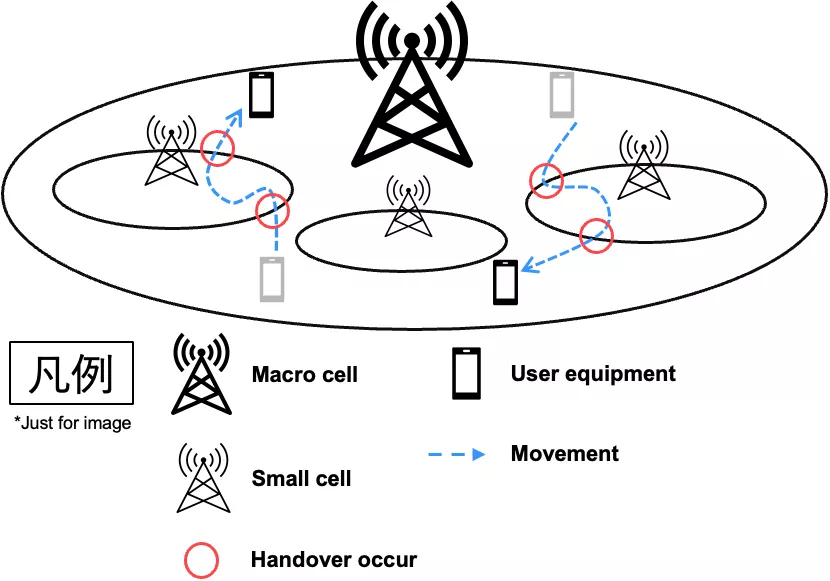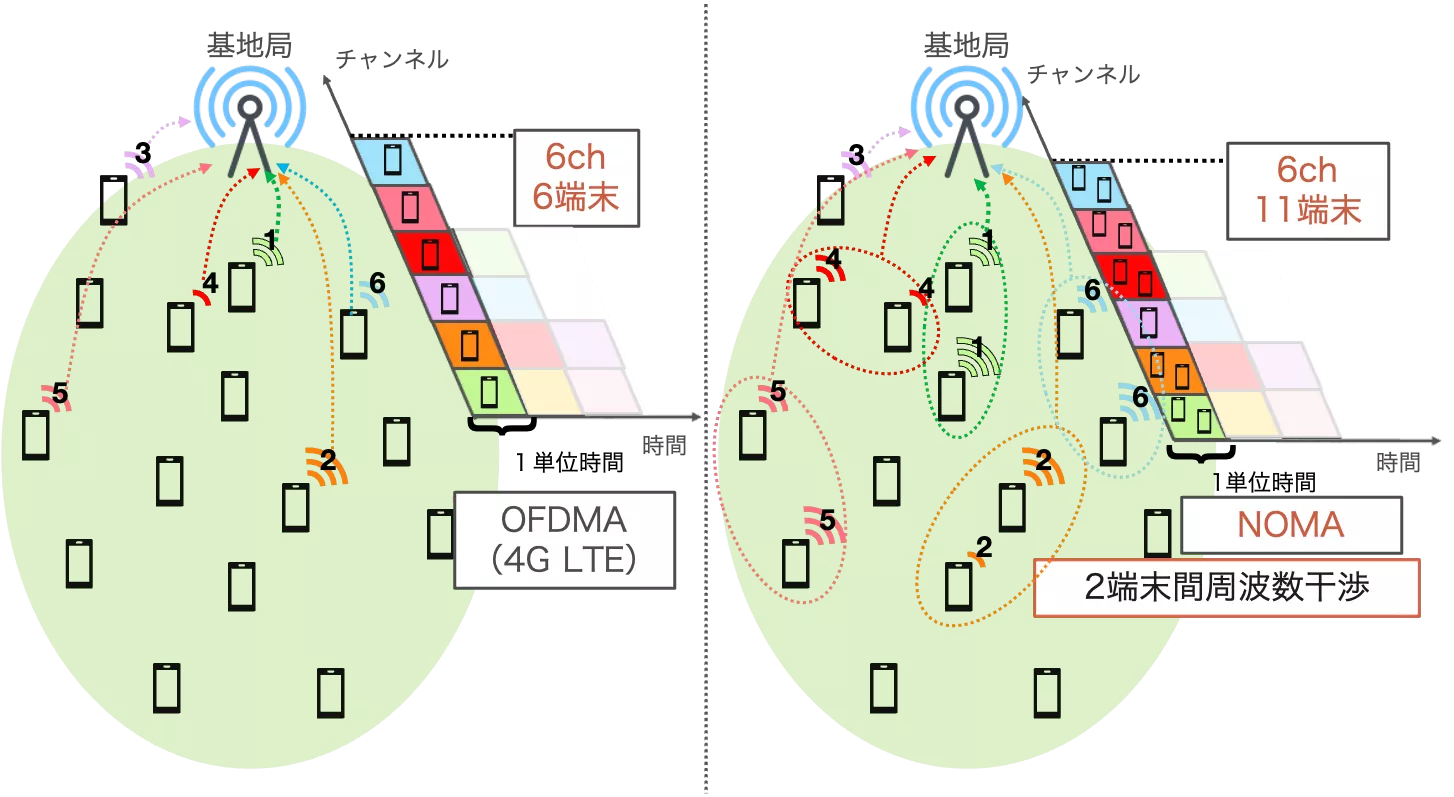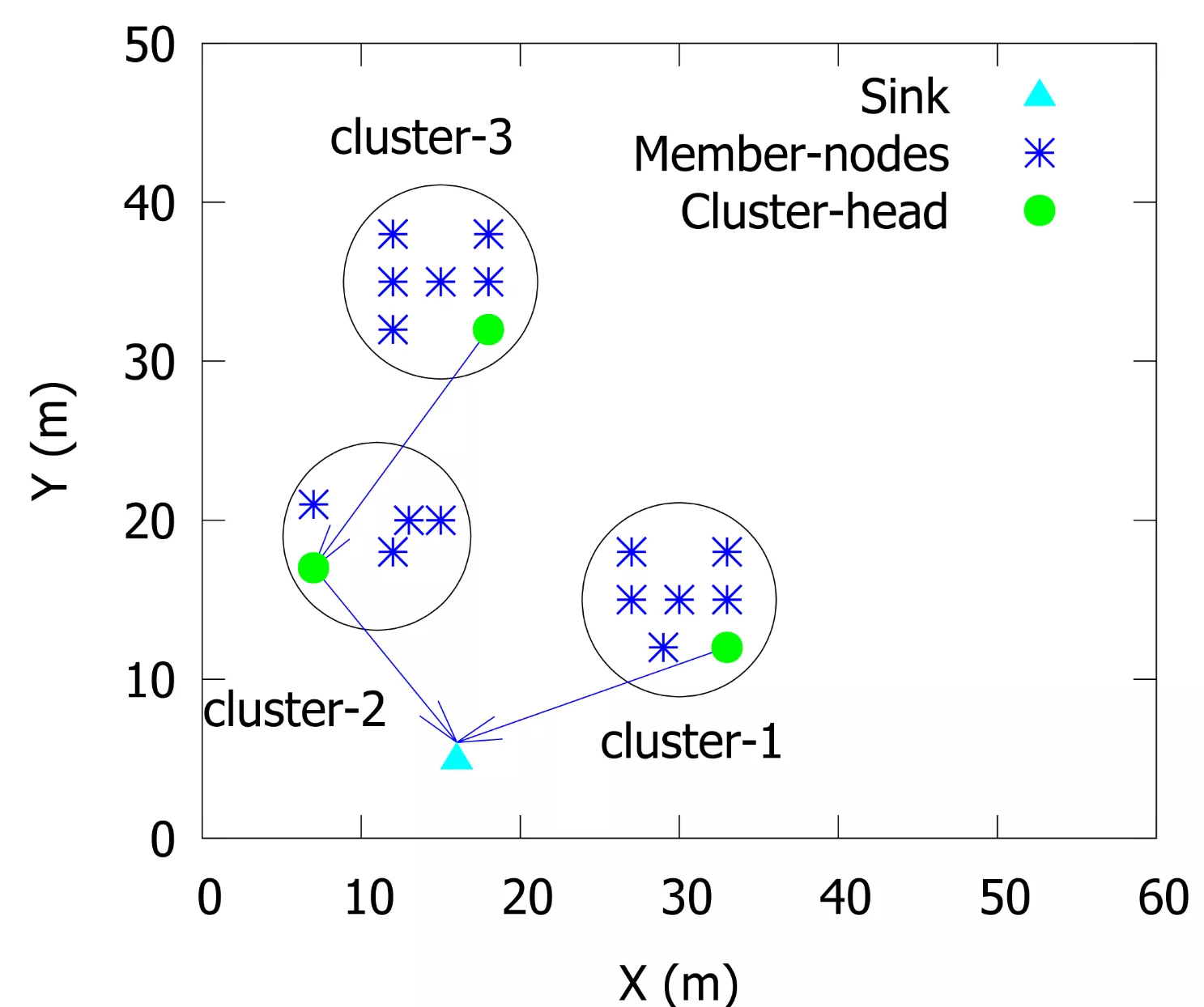RESEARCH
研究内容
研究内容
領域
研究テーマ: ネットワーク制御
LTE と 5G の迅速な発展により,よりスムーズなハンドオーバ (基地局間での通信の切り替え) が求めらている.
従来のハンドオーバアルゴリズムに使われている RSRP 受信信号強度では受信信号の激しい変化でハンドオーバのタイミングを正しく判断できず,ハンドオーバ失敗にもたらすため,モバイル通信環境において,RSRP より安定な変化がもつ下り CQI を用いたハンドオーバアルゴリズムを提案する.
新しいアルゴリズムにより,ハンドオーバ失敗率を抑え,より信頼性の高いハンドオーバ仕組みをもつネットワークの提供に目指しています.

ハンドオーバ
Beyond 5G とは 2030 年代に導入される次世代の情報通信インフラであり、あらゆる産業や社会活動の基盤となることが見込まれています。
我々はその中でも「高速」で「超多端末接続」が実現可能なネットワークを実現するため、非直交多元接続(NOMA)という技術に注目して研究しています。「非直交」と言うぐらいですから、今までは「直交」していました。つまりこの直交性をあえて崩すことで前述のような次世代の通信を実現します。
「直交性とは何か?」「非直交にしたら何が起こるのか?」について気になった方はぜひ研究室に来てください。皆さんが普段使っているスマートフォンの奥深さやこれから未来について研究してみませんか?

NOMA
Wireless sensor networks are formed by a large number of tiny sensors with limited power sources. Clustering is an efficient technique to tackle the issue of power scarcity in these small devices.
In clustering technique, the nodes are divided into groups of clusters. The cluster head is a special node that collects the sensed data from the member nodes of its cluster, aggregates this data and sends it to the sink. The selection of the data routing path highly impacts both the success rate and the energy cost of data transmission to the sink.
However, the cluster head selection, cluster formation and the path selection require high computational complexity for dense networks. We employ various optimization techniques to resolve the issue of complexity related to clustering techniques.

Cluster-Head